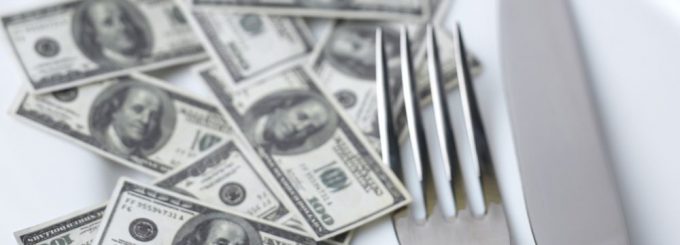The History Of Small Size American Notes

Small size paper currency first became popular in the United States during the 1920s. The Bureau of Engraving and Printing had grown steadily in size and the need for specialized ink and paper increased production costs, which prompted the issue of smaller bills to reduce expenses.
1928 Funny Back Silver Certificate
This was one of the earliest small sized notes, which had a face value of just $1. The front depicts an image of President George Washington, while the back has a prominent inscription of the word “ONE” which is engraved with fancy scrollwork and borders. The note was given the nickname “Funnyback” by collectors because initially it appears that the back has a mismatched design from the front, but of course this was intentional. The note was issued around 1928 and could be redeemed for silver.
National Bank Bills (1929 to 1935)
Although National Bank bills were initially authorized during the 1860s so that chartered banks could issue individual notes, by 1929 more than fourteen thousand banks were chartered across the U.S. The National Bank note was one such bill which displayed a brown colored seal with serial numbers. These were issued up until 1935, at which time the bonds that secured the notes had been called in. The small size national notes come in two variants, Type 1 and Type 2. While Type 1 notes display the charter number twice, Type 2 notes display it four times. Additionally, the Type 2 note has an image of Abraham Lincoln on the front, with an image of the Lincoln Memorial in back. These notes were issued in 1929 from the First National Bank at Laporte, Pennsylvania.
Small Silver Certificates (1929 to 1968)
At one time these notes were backed by a silver amount that was equivalent and held within the U.S Treasury. They were payable to bearers when requested in an amount equal to the face value of the note in silver. Each silver certificate carried a blue colored seal with serial numbers.
Small Federal Reserve Notes (1929 to Present)
By 1913 a central bank called the Federal Reserve was established in the U.S., which required a new note. This note is referred to officially as the FRN, or Federal Reserve Note. At present FRNs comprise about 99.85 percent of all the paper money that is being circulated in the United States and most Americans refer to them simply as U.S. dollars. However, these notes differ from the earlier ones issued by the National Bank since they are backed by the Federal Reserve System as opposed to individual financial institutions.
FRNs are printed in denominations that range from $1 to $10,000. However, most Americans never see or use the $10,000 notes, and even the $2 and $1 dollar notes have only been issued since 1963, while others notes such as the $10, $20, and $100 have been issued for more than 70 years. In practice, the highest denominated note circulating in the USA today is the $100 bill, as the $500 bills have largely been redeemed and then destroyed since the 1960s.


